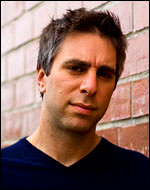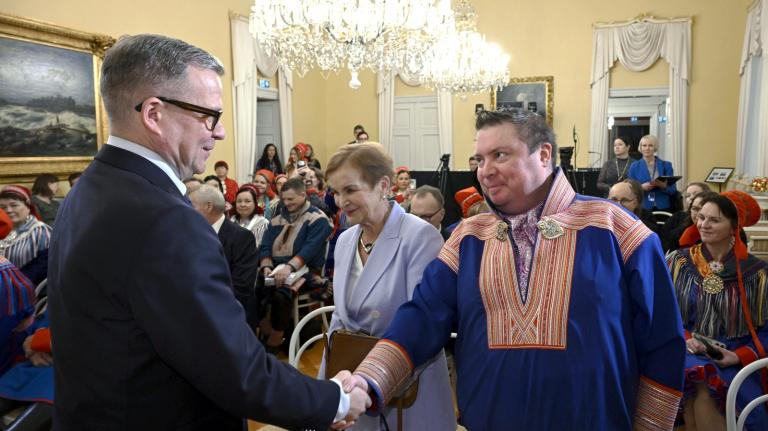
In 2004, former Sierra Club President Adam Werbach made by a splash by asking, “Is environmentalism dead?” In a speech to the Commonwealth Club in San Francisco, he critiqued his own work as an environmentalist and suggested that the environmental movement was ill-suited to solve the challenge of global warming. Much lively debate and serious reflection ensued.
On the evening of April 10, Werbach will give a follow-up speech, entitled “Birth of Blue,” to the Commonwealth Club’s INFORUM Program. He’ll argue that a new movement is emerging that goes beyond the green movement to incorporate a broad range of human aspirations. [UPDATE: Here’s a preview of the speech in the San Francisco Chronicle.] [ANOTHER UPDATE: Here’s a PDF of the final speech.] [STILL ONE MORE UPDATE: Here’s the speech reprinted in a blog post, with lots of comments below, including a couple from Werbach himself. He’s also joined the discussion below.] [FINAL UPDATE (REALLY!): Here’s video of the speech.]
We’ll post text and video of the speech when it’s available, so check back here. In the meantime, Werbach gives the basic rundown on BLUE:
What is the BLUE movement?
People who are part of the BLUE movement aspire to make a difference through the people and products that touch their lives. It encompasses green issues like protecting our last wild places and reducing our output of CO2, but it also includes personal concerns like saving money, losing weight, and spending time with friends and family.
What are the objectives?
There are three objectives of the BLUE movement. First, to measurably improve the quality of life of the people who join. Second, to engage as many people as possible in the effort. And third, to increase their effectiveness in making a difference in their community and the world.
Why do we need a new movement?
Political solutions are only one part of the picture. We also need to make a difference in the way we live our lives and what we buy. There’s a gap between the challenges facing our world and the actions people are willing to take in their own lives. While most people say they care about global warming, and many people know that they should lose some weight, far fewer are willing to take the steps needed to solve either challenge. (Of course, personal behavior does not replace the need for government action.)
What’s a PSP?
A PSP is a “personal sustainability practice.” It’s a simple action you take regularly that’s good for you, your community, and the planet. Hundreds of thousands of people have taken on PSPs, from sixth graders to Wal-Mart cashiers to CEOs of Fortune 500 companies. Examples of PSPs include quitting smoking, eating one less meat meal a week, doing your laundry with cold water, hosting a Sunday night organic meal, or parking your car in the spot farthest from the store so you can get a little exercise on your way in. The goal of the BLUE movement is to have 1 billion people create PSPs, representing over $1 trillion in consumer buying power.
How do you define sustainability?
Sustainability brings human culture and the living world into a healthy relationship. It has four dimensions — social, cultural, environmental, and economic. Environmentalism and the green movement frequently put the environment in front of all other goals. The BLUE movement holds all of these aspects in balance.
What does BLUE have to do with shopping?
At its heart, BLUE is a lifestyle movement that asks people to create personal sustainability practices and translate them into the things they buy. While political activism is at best a biannual pursuit, shopping is a regular activity for most people on the planet, and if trends continue, for virtually everyone. We can either cede this field to the profit-driven marketeers, or we can use our consumer power to improve our lives and support structural change. Shopping won’t solve all our problems — far from it — but ignoring the fact that we do shop won’t help either.
Why a movement of consumers?
Revolutions have often been led by consumer movements — from the Boston Tea Party to Gandhi’s salt march to the Woolworth’s lunch-counter sit-in in Greensboro, N.C. Today, private consumption expenditures in the United States represent about 70 percent of the gross domestic product, and to this day social activists have spent little effort trying to organize consumers to make a difference through the things that they buy.
Who started this movement?
BLUE has been well-known as the symbol of an integrated view of sustainability for over a decade now, largely in Western European nations like Switzerland. In these countries green thinking is not new, and people are looking for something that goes beyond their concern for nature to represent all of their values.
So does this mean I can no longer be green?
No! Green is still alive and well, and there are a growing number of people (although still a very small group) who place green concerns as their top priority. BLUE encompasses green concerns and goes a step further by asking how ecological thinking can help people solve other problems in their lives, from quitting smoking to saving money to spending more time with their families.
How can people join the BLUE movement?
By reading this they’ve started the journey. Start by developing your own personal sustainability practice. Then start bringing your PSP into the way you shop.
How do I use it in a sentence?
“I’m totally into the environment,” she says as she updates her status on Facebook, “but I’m the type of person who’s BLUE and not only green.”



